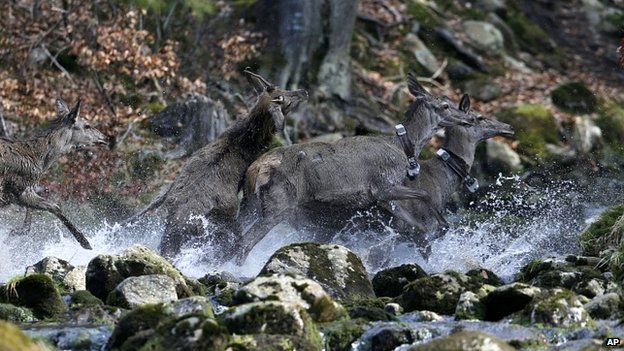Czech deer still avoid Iron Curtain
- Published

The Iron Curtain fell 25 years ago, but it seems that nobody told the deer.
A new study has found that a quarter of a century on, red deer on the border between the Czech Republic and old West Germany still do not cross the divide.
After tracking 300 deer, researchers said the animals are intent on maintaining the old boundaries.
One of the scientists involved told the BBC the deer are not ideological, "they are just very conservative in their habits."
During the Cold War, electric fences made the Czech-German boundary impossible to pass.
Czechoslovakia, where the Communists took power in 1948, had three parallel electrified fences, patrolled by heavily armed guards.
Nearly 500 people were killed when they attempted to escape.
The researchers followed the movement of the 300 Czech and German deer via GPS-equipped collars, which sent data to computers.
Biologist Pavel Sustr, who led the seven-year project, said that even though the area is now forest and open land with no barrier, the deer still stick to their Czech or Bavarian sides.
"It was fascinating to realise for the first time that anything like that is possible," Mr Sustr said. "But the border still plays a role for them and separates the two populations."
He said that was remarkable because the average life expectancy for deer is 15 years and none living now would have encountered the barrier.
Scientists believe that fawns tend to follow mothers for the first year of their lives and develop a pattern in their movements, so the same area remains the habitat for each new generation.